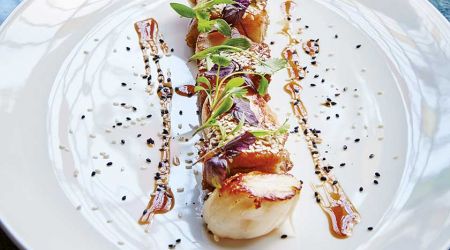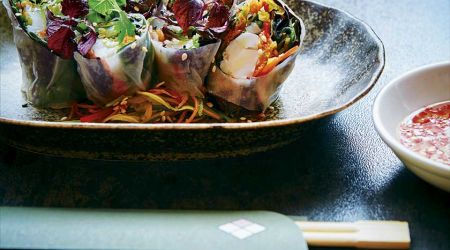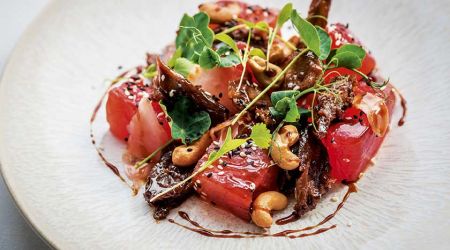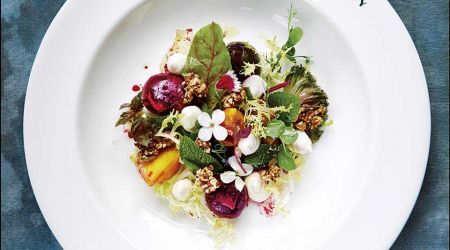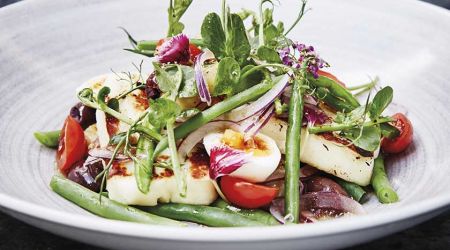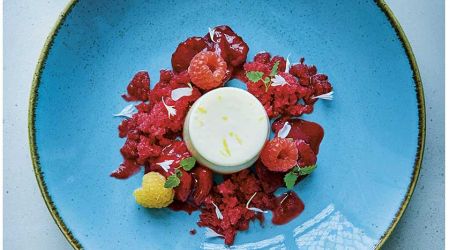Gary Lee
North London-born Gary Lee has been with The Ivy since 2007, and became executive chef in 2011. He lives in Walthamstow with his partner Megs and their three girls. He boxes three times a week and is a keen cyclist. He first joined Caprice Holdings in 2000, at Le Caprice under Mark Hix.
There are some buildings that are greater than the sum of their parts. The art speaks volumes, staff keep secrets and if walls had ears, you can only imagine the tales they could tell. The people who move through them are part of a cast, each playing a role, a custodian of the building’s history.
The Ivy – arguably the most famous restaurant in the world – is one such place. Celebrating a centenary this year at its art deco site in Covent Garden, it took time to build the reputation it has today. From small acorns huge oaks grow, and on opening in 1917 as a small café, founder Abel Giandolini was unlikely to consider what his fledgling enterprise would become.
As men fought in the First World War, the restaurant began to find its path and define its future. The story of its name is the perfect paradigm of the UK’s spirit at the time. As Giandolini apologised to one of his regulars, actor Alice Delysia, for disruption in the dining room, she replied quoting lyric from a popular song of the day: ‘We will always come to see you, we will cling together like the ivy.’ Another world war, 23 prime ministers and eight recessions later, like Londoners’ resolve, the name has stayed strong and true.
An edible ethos
At the core of everything is the restaurant’s food. It’s moved with the times and doffs a cap to trends and the contemporary, but it’s tradition and consistency that keep guests coming back. Dishes such as shepherd’s pie, sausage and mash and Dover sole meunière are the stuff of legend, while more recently, the likes of bang bang chicken, scallops with sticky pork and watermelon duck salad have taken up the baton and kept the menu relevant and cool.
Overseeing it all is The Ivy’s executive chef Gary Lee. This year he celebrates a decade in charge of the kitchen – an anniversary that chimes nicely with that of the restaurant – and no one understands the nature of stewardship better than he. ‘Working here, you’ve got to understand the synopsis behind the building,’ he says. ‘It’s not me, you, or anyone else that made the foundation. It exists today as it always has been.’
‘I defy anyone to come here and say they don’t like anything on the menu,’ he challenges. ‘There has to be something on there that you want to eat, and that’s how I see my job. I don’t want my name above the door, I’m not fussed about Michelin stars; I just want to produce food that appeals to everybody.’
‘I’ve got a menu in my office from 1956, and sometimes I just stare at it. It reminds me what we are and what we’re doing. We might have beautiful linen table cloths and some of the best-dressed staff in the business, but there can also be a bottle of ketchup or Lea & Perrins on the table,’ he says. ‘Some restaurants make you feel like you can’t have that. Basically, if I’ve got the ingredients in the kitchen, I’ll make anything that you want.’
Indeed, the punters keep flooding back. As photos from The Ivy’s 100-year past will attest, the celebrities come out in force. Daniel Craig, Kate Moss and Tom Cruise count themselves as regulars, and as a new star is born, it’s the first reservation they want. ‘Sure, we get the stars, young and old,’ Lee says with a toothy grin. ‘If you’ve been a regular here for 30 years, you’ll recognise your shepherd’s pies and dressed crabs on the menu, but now you’re bringing your son or daughter, they don’t want to eat like that. They want sashimi, they want beetroot, they want grains and pulses – they don’t want to eat like you, but they do want the level of service that you’ve always banged on about.’
Home from home
Lee manages a kitchen serving around 3,000 customers a week. Some services run to more than 300 covers, and he caters for breakfast, lunch and dinner. His life tells a similar story of frenetic pace, and perhaps explains why he looks so damn chilled about the whole operation. ‘I grew up in a children’s home in Chingford [north-east London] aged eight to 18. It was a chequered time,’ he admits. ‘There were 12 of us in the home, all black kids. There was never any trouble in there, but as soon as you stepped out into the streets, you had to be able look after yourself. I learnt from a young age that nothing was going to be given to me.’
‘But that house taught me structure. It taught me how to look after myself, ask for things, keep clean. It sounds basic, but when you’ve not got a mum or dad to tell you that kind of stuff, who do you learn it from? I owe that place a lot. I really do.’ It’s the only time in the interview that Lee’s Cheshire cat grin falls from his face and his booming laugh doesn’t echo around the room.
‘Food rescued me. It meant that I could do something people actually liked me for and it didn’t matter about the colour of my skin. I wanted to please people, and quickly realised I could do it through my cooking.’
Lee knew on his 16th birthday that he’d be out on his own. Bills, a roof over his head and food on the table would be his own responsibility. He needed an income, fast. Cue catering college in the day and a stream of low-grade cooking jobs in the evening. ‘I worked in a carvery producing 18 different salads and at a grill where they’d sell 300 steaks a night. I learnt to work fast and work efficiently.’
The 1980s marked the start of his ‘real’ career. ‘I went to a restaurant in Tower Bridge and met the chef, a guy in his eighties who claimed to have worked for [kitchen pioneer Auguste] Escoffier. All he did was feel my hands for calluses and asked “when can you start?”.’ For an aging guy to accept a young chef irrespective of skin colour, it showed Lee a side of progressive London he hadn’t seen before. He blossomed and went from strength to strength.
Jobs under Mark Hix and Tim Hughes followed, starting his journey with Caprice Holdings, current owner of The Ivy. He started at Le Caprice before picking up awards at Bamboo and taking a role as private events chef at The Ivy. In 2007, he took charge of all aspects of the restaurant as head chef.
Lee uses his kitchen to teach the principles he learnt as a young chef and as a platform for people from all backgrounds to get a start in the industry, like the one offered to him. If ever there was an example of a restaurant’s name staying true to its roots, The Ivy would be it.
Will it still be there in another 100 years? Only time will tell. Though with its strong backstory and web of vines so closely intertwined with celebrity and theatreland, no one would be surprised to see The Ivy clinging together for centuries to come.
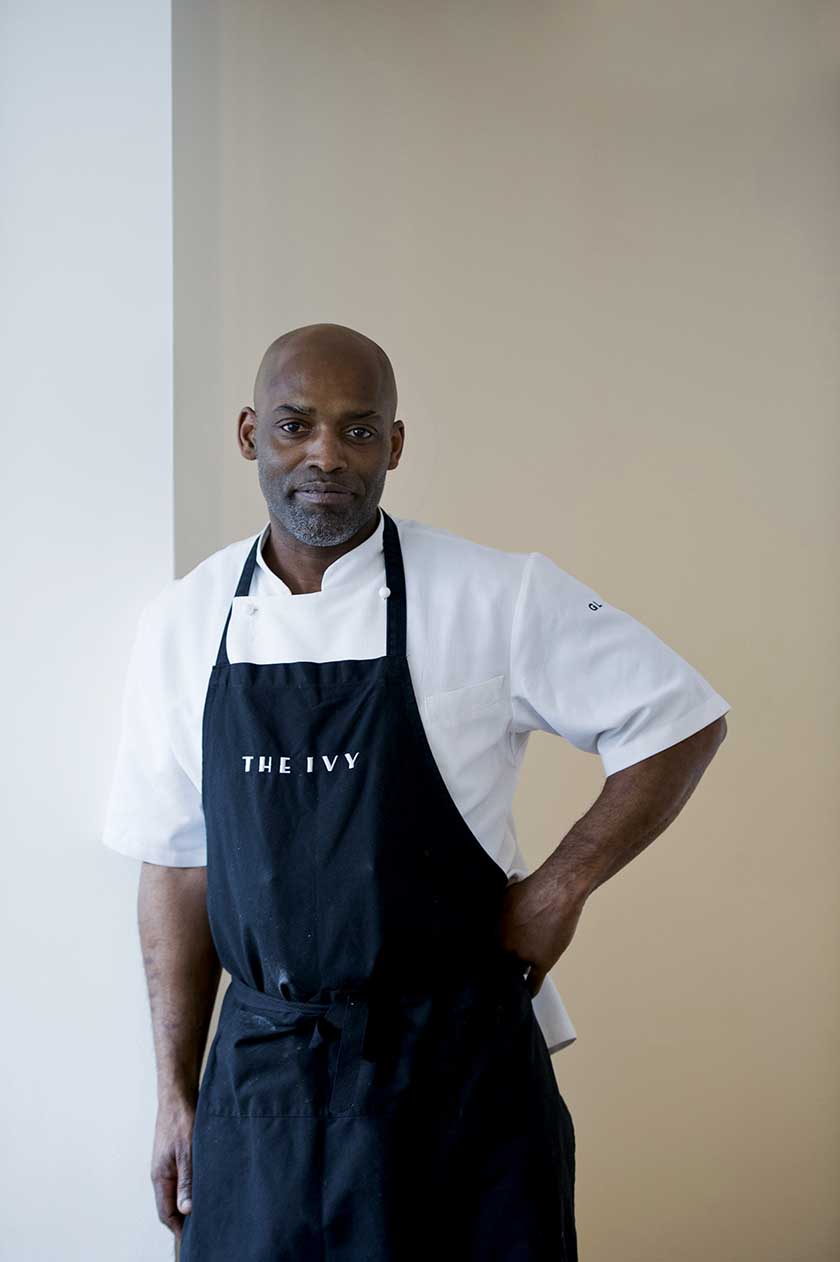
Recipes
Get Premium access to all the latest content online
Subscribe and view full print editions online... Subscribe

